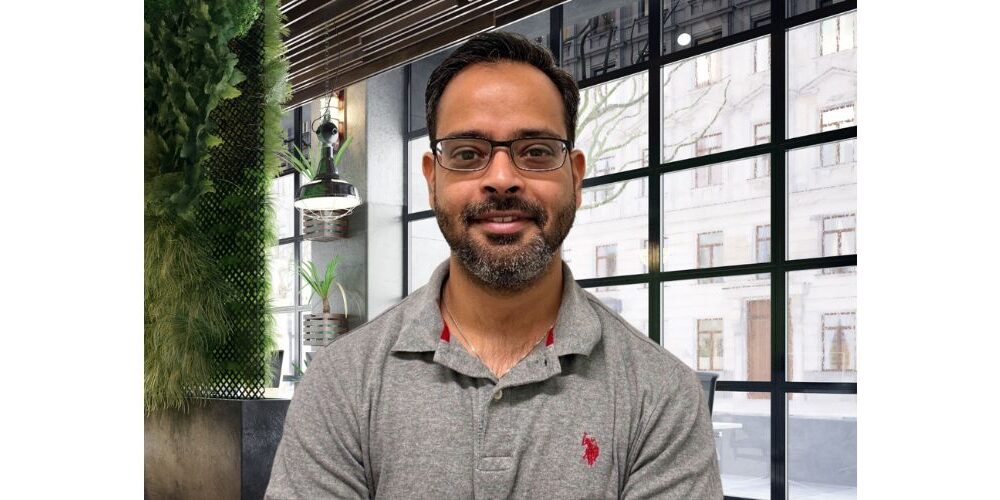Byline: Roberta Caldwell
Why does money—digital, immediate, and boundless in concept—still crawl through archaic systems designed for a world of paper ledgers and end-of-day tallies? That is the question Hatim Kapadia found himself asking more than a decade ago. With more than 21 years of experience, he has built a reputation for transforming outdated infrastructure into lean, scalable systems that support real-time financial operations.
Here, Kapadia reflects on his journey, shares lessons from decades in engineering, and explains how his work is positively contributing to the industry of banking technology.
The Foundation of Innovation
What originally sparked your interest in technology and engineering?
“My interest in technology and engineering was sparked by my curiosity and fascination with problem-solving. Growing up, I was influenced by family members who shared stories about their engineering projects. My college professors taught me the importance of creative problem-solving and collaboration in driving innovation. These experiences shaped my approach, and I remain passionate about using technology to solve real-world problems.”
How did your early career experiences lay the groundwork for the large-scale transformations you led later?
“At Infosys, I learned to navigate the Global Delivery Model, managing distributed teams across different time zones and cultures. At Syntel, I developed automated testing frameworks for financial applications, revealing how proper testing infrastructure could dramatically reduce risk while accelerating development cycles. These experiences gave me a comprehensive understanding of financial technology from multiple angles and helped me identify the pain points in traditional batch processing systems.”
Transforming Legacy Systems
What was your strategy for breaking down legacy modernization challenges into achievable steps?
“My strategy involved assessment and prioritization of critical systems, breaking down monoliths into manageable components, implementing API-driven design, and leveraging cloud-native technologies. Core principles that guided me included customer-centricity, incremental progress, effective collaboration, and proactive risk management. This approach enabled successful transformation of decades-old systems into modern, real-time architectures.”
Why was moving to real-time transaction handling so important?
“Real-time processing enables faster transactions, enhancing customer satisfaction. It allows for more agile business operations and provides more accurate, timely insights for decision-making. The biggest obstacles included overcoming legacy system limitations, ensuring data quality and consistency, and designing systems to handle increased transaction volumes. The transition delivered significant benefits in customer experience, competitiveness, and data insights.”
Quality and Performance
Why is rigorous testing so critical in large-scale system upgrades?
“Comprehensive testing identifies and mitigates potential issues, ensuring system stability. It provides confidence in the quality of changes, enabling faster and more reliable deployments. We maintain stability through automated testing frameworks, incremental changes, continuous monitoring, and collaborative development practices. These strategies ensure the integrity of large-scale system upgrades, even at a rapid pace.”
How did in-memory computing improve performance for real-time payments?
“In-memory computing dramatically reduced latency and increased throughput. By moving critical transaction data into distributed memory grids, we achieved processing speeds orders of magnitude faster than conventional systems. The key innovation was developing sophisticated synchronization mechanisms to ensure data consistency, including proactive data grid warm-up and reactive synchronization patterns. The performance improvements were substantial—transaction processing times decreased from seconds to milliseconds, enabling true real-time payments.”
Modern Development Practices
How did you successfully introduce CI/CD practices for mission-critical transaction systems?
“We evaluated existing workflows, developed comprehensive automated testing suites, set up CI pipelines for automated builds and validation, and implemented continuous delivery pipelines. This approach enabled faster and more frequent releases, improved system reliability, reduced deployment risks, and enhanced collaboration among teams.”
What was your strategy for embedding machine learning models into the transaction flow?
“We trained models on historical data to recognize patterns and anomalies, integrated them with payment processing for real-time analysis, and continuously updated them to adapt to evolving fraud patterns. This AI-driven system reduced financial losses, improved customer experience by minimizing false positives, and increased customer trust by creating a safer payment environment.”
Leadership and Strategy
How do you bridge the gap between technical engineering and business analytics?
“I frame technical decisions in terms of business impact, connecting them directly to outcomes like customer retention, operational efficiency, or revenue growth. This helps business stakeholders understand the value of technical investments and helps engineering teams focus on what truly matters. By aligning technical projects with key business strategies, we secure executive sponsorship and necessary resources while ensuring the engineering team understands how their work contributes to business success.”
How have your innovations impacted the bottom line?
“My work transforming legacy payment platforms into distributed in-memory computing systems has driven optimization of more than $100 million per year in technology investment. The regression testing framework I built for legacy payment applications resulted in 75% year-over-year savings. Additionally, my contributions to implementing SPARK with over 200 jobs running daily have significantly improved data processing capabilities and operational efficiency.”
Industry Impact and Future Trends
How do you see industry-wide practices evolving with real-time, intelligent transaction systems?
“The shift is driving increased adoption of real-time payments, integration of AI for fraud detection and risk management, API-driven architecture enabling greater interoperability, and enhanced security practices. The approaches we pioneered are becoming increasingly adopted across the sector, driving greater efficiency, security, and customer satisfaction.”
What emerging technologies excite you most for their potential impact?
“The convergence of AI, distributed ledger technologies, and embedded finance has tremendous potential to reshape financial services. Generative AI will enable more intuitive interfaces and personalized financial advice. Quantum computing holds promise for revolutionizing cryptography and risk modeling. Decentralized finance concepts combined with appropriate regulatory frameworks could transform financial infrastructure. Perhaps most transformative will be embedded finance—integrating financial services seamlessly into everyday activities and transactions.”
A Measured Force Behind Fintech’s Evolution
Throughout the examination of Hatim Kapadia’s work, a clear picture takes shape of how financial technology is moving from batch processing toward intelligent, real-time systems. His body of work suggests that successful modernization depends not only on engineering expertise, but also on strategic thinking, strong leadership, and an ability to balance rapid innovation with long-term system integrity.
Kapadia’s focus on software quality, rigorous testing frameworks, and steady, incremental progress offers practical lessons for organizations looking to upgrade their own infrastructure. His contributions reflect a broader shift in the technology sector toward scalable, secure, and resilient financial systems built for evolving demands.
Photo Courtesy of: Hatim Kapadia












